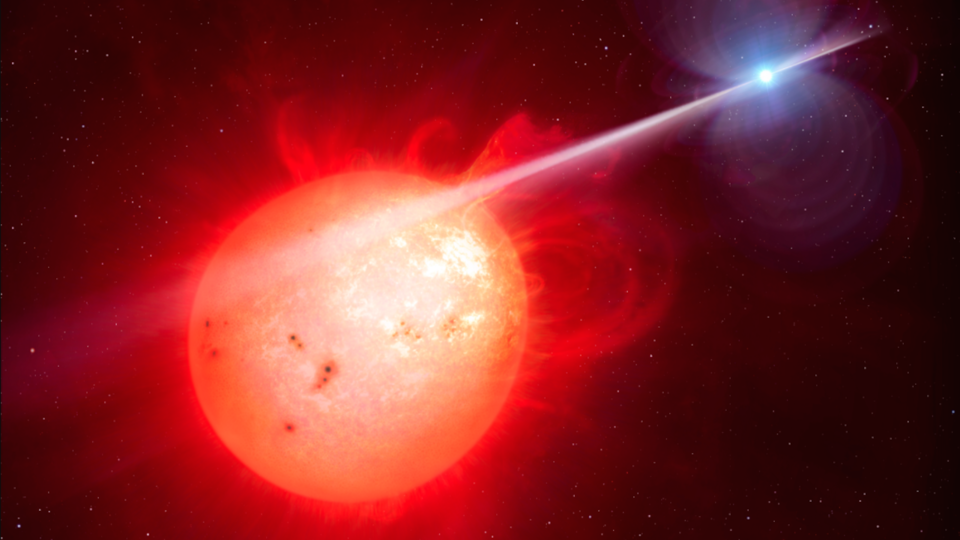Mapping the Heavens, Priyamvada Natarajan, Yale University
Monday, March 6th at 7:30 pm

This week scientists revealed the first white dwarf pulsar ever identified. That’s right, a rapidly spinning, burnt-out stellar remnant the size of Earth—but 200,000 times more massive! And, oh yeah, it’s one half of a binary star system and lashes its red dwarf partner with powerful beams of electrical particles and radiation, causing the entire system to brighten and fade dramatically twice every two minutes.
If that doesn’t blow your mind, I don’t know what will.
From its unusual behavior, astronomers determined that AR Scorpii (AR Sco, as they call it) in the constellation Scorpius is a white dwarf pulsar. With an electromagnetic field 100 million times more powerful than Earth’s and spinning with a period just shy of two minutes, AR Sco produces lighthouse-like beams of light and charged particles. This focused beam of concentrated radiation—much like a particle accelerator emits—is totally unique in the known Universe.
Its companion—a cool red dwarf one third the mass of the Sun—resides around 1.4 million kilometers (870,000 miles) away and the two orbit each other in 3.6 hours. AR Sco’s powerful beam accelerates electrons in the atmosphere of the red dwarf to nearly the speed of light, an effect never observed before in similar types of binary stars. The red dwarf is basically powered by the kinetic energy of its spinning neighbor.
“The new data show that AR Sco’s light is highly polarized,” says study co-author Tom Marsh, “showing that the magnetic field controls the emission of the entire system, and a dead ringer for similar behavior seen from the more traditional neutron star pulsars.”
“AR Sco is like a gigantic dynamo: a magnet, the size of the Earth, with a field that is [about] 10,000 [times] stronger than any field we can produce in a laboratory, and it is rotating every two minutes,” says another co-author, Boris Gänsicke. “This generates an enormous electric current in the companion star, which then produces the variations in the light we detect.”
Mapping the Heavens, Priyamvada Natarajan, Yale University
Monday, March 6th at 7:30 pm